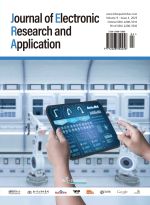Analysis of Guqin Playing Techniques Based on Artificial Intelligence
Abstract
The Guqin art form is one of China’s oldest musical traditions and is recognized as a significant part of the world’s intangible cultural heritage. Numerous ancient scores have survived to the present day, but only a select few have been adapted for contemporary music. While ancient Guqin scores can be translated into modern numbered or staff notation, their rhythmic elements cannot be accurately replicated. The process of converting these scores into a simplified Guqin notation presents challenges, particularly in selecting appropriate fingerings. To address the issues related to playing ancient scores and transferring new ones, this paper introduces a triple representation method for Guqin score knowledge using knowledge mapping technology. It transforms the simplified Guqin notation into a text format, exemplified by the Ming Dynasty’s “Magic Secret Score.” A computer-editable text corpus of Guqin is created, and various tags are applied to the text. A word cloud visualization of the “Magic Secret Score” text spectrum is generated using a word cloud tool. The frequency of different right-hand fingerings in the “Magic Secret Score” is analyzed. By examining the temporal characteristics of the music, the paper extracts the timing relationships of right-hand fingerings from the text corpus and identifies various performance templates using the KMP pattern matching algorithm. Specifically, it analyzes 64 different right-hand finger techniques. Additionally, the frequency of string combinations in the “Magic Secret Score” is recorded, providing essential guidelines for future intelligent music transfer reasoning. The experimental findings indicate that there are specific constraints on the timing of fingerings and string usage in musical tones, with the maximum length of reusable fingering timing templates being no more than 25.
References
UNESCO, 2003 Guqin and Its Music, viewed May 5, 2022, https://ich.unesco.org/en/RL/guqin-and-its-music-00061
Xu J, Xu X, 2006, Guqin Art of Zhejiang School, Shanghai Literature and Art Publishing House, Shanghai.
Hahm H, Lee J, Jeong S, et al., 2020, A Digital Solution and Challenges in the Safeguarding Practices of Intangible Cultural Heritage: A Case of ‘ichngo.net’ Platform, APIT 2020: Proceedings of the 2020 2nd Asia Pacific Information Technology Conference, 94–99.
Chen WW, Sun Y, Wang L, et al., 2020, Code +: Cyber Archiving, Interactive Documentary, and Immersive Experience for the Digital Heritage Narratives of Asia, SA’20: SIGGRAPH Asia 2020 Courses, 1–114.
Galani A, Kidd J, 2019, Evaluating Digital Cultural Heritage ‘In the Wild’: The Case for Reflexivity. Journal on Computing and Cultural Heritage, 12(1): 1–15.
Music Research Institute of Chinese Academy of Arts, Beijing Guqin Research Society, 1980, Collection of Qin Music, Zhonghua Book Company, Beijing.
Chen C, 1989, Preliminary Application of the Computer Technique to Guqin Music Research. Journal of Computer, (07): 525–533.
Zhang H, 2007, Explore of Guan Pinghu’s Dapu in Qin Zither. Musicology in China, (03): 90–109 + 52.
Sun Q, Zhang D, Fan Y, et al., 2010. Ancient Chinese Zither (Guqin) Music Recovery with Support Vector Machine. J. Comput. Cult. Herit. 3(2): 5.
Gu Y, 2009, Guqin Jianzi Notation Music Auto Composition Based on Genetic Algorithm, dissertation, Xiamen University.
Ni E, Jiang M, Ding X, et al., 2011, Handwriting Input System of Chinese Guqin Notation. Journal on Computing and Cultural Heritage, 3(3): 1–22.
Zhou C, Gu Y, Lin G, et al., 2009, Reconstruction and Simulation Method and Its Implementation for Guqin Tamber. Journal of System Simulation, 21(02): 572–575.
Wu Z, 2017, Guqin Jianzi Notation of Standard Script of Handwriting of Printing Font Design. Print Magazine, (06): 56–60.
Chen Y, 2013, Zha Fuxi’s Contribution to the Study of Tuning Systems in Guqin. Journal of Xinghai Conservatory of Music, (03): 1–5 + 25.
Li M, 2008, Hidden Wisdom in Jianzi Notation of Guqin. Chinese Music, (01): 86–90 + 92.
Sun L, 2009, Performance Aesthetics Concerning in Early Paper of Qin Zither Theory. Musicology in China, (03): 96–100.
Cai J, Cao X, 2017, Implication of Guqin and Modern Interpretation—Analysis of Xu Mengdong’s Cello Music “Far Sound.” People’s Music, (7).
Zhu W, Zhang J, Liu H, et al., 2008, Differential Cognitive Responses to Guqin Music and Piano Music in Chinese Subjects: An Event-Related Potential Study. Neurosci Bull, (01): 21–28.
Liu H, et al., 2008, Different Effects of Guqin Music and Piano Music on Cognitive Responses of Chinese Subjects: An Event-Related Potential Study. Chinese Journal of Neuroscience, (01): 21–28.
Wang H, Qi G, Chen H, 2009, Knowledge Map, China Gongxin Publishing Group, Beijing.
Yang Y, 2022, Research on Music Knowledge Graph Construction Frame. Digital Library Forum, (02): 40–46.
Zhou D, Zheng K, 2022, The 13th Asia-Pacific Music Education Research Forum from a Comparative Perspective—Based on Visual Knowledge Mapping Analysis. Chinese Music Education, (01): 59–65.
Xu S, 2019, Research on Chinese Music Education from the Perspective of Mapping Knowledge Domain Analysis. Chinese Music Education, (09): 26–31.
Xiao Y, Ouyang S, 2020, Analysis on the Research Status of Basic Music Education in China—Based on CiteSpace Knowledge Map Method. Art Education, (12): 29–3.
Liu J, Yin A, 2018, Mapping Knowledge Domain of Music Education in Foreign Countries. Foreign Primary and Secondary Education, (03): 26–32 + 18.
Chen Ge, Zhang Y, Zhang Y, 2012, Study of Music Notation in Zhe’s School of Guqin and Analysis of the Data Structure and Text-Label of Sheet Score. Journal of Hangzhou University, 11(6): 561–565.

